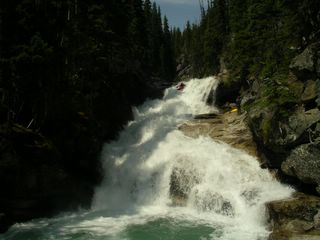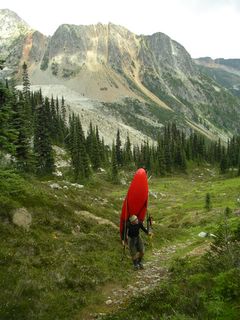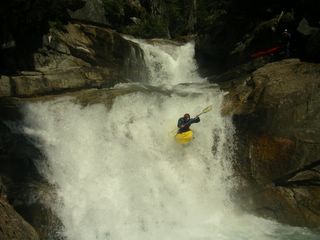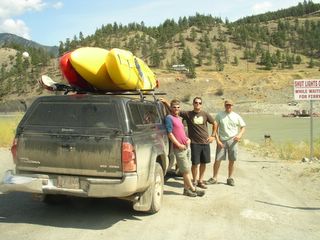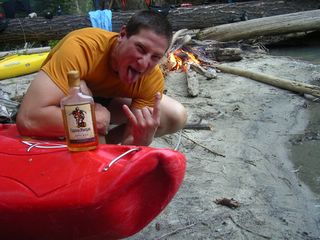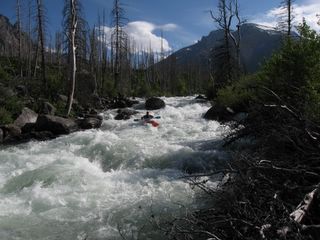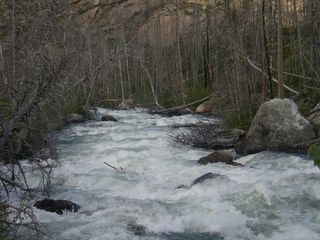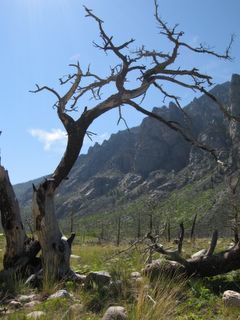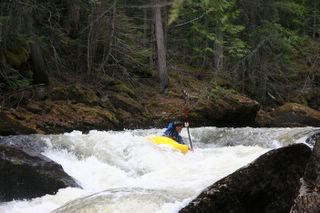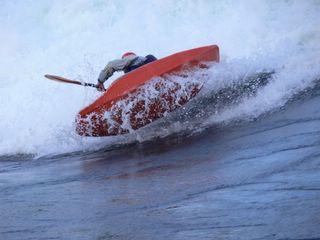
Left line off Overlander Falls - Upper Fraser River, BC - Canada.

BC's longest river has a record much entwined in the history of British Columbia. For centuries native peoples, traders, explorers and settlers have been bound to using the Fraser River corridor because of the essential route it provides through the mountains between the Interior and the Coast. The upper portions of the Fraser River were first encountered in the late 1700's by hardened explorers Alexander Mackenzie and Simon Fraser. It was Simon Fraser himself who in 1808 followed a large portion of this uncharted river to its mouth. After many months in the wilderness he reached the Ocean discovering that the Fraser wasn't part of the Columbia River system.
Today the main flow of British Columbia's largest watershed is one of the last major rivers in the world still running its course free of human interference. Although this doesn't include many tributaries forever changed from hydro projects, the main flow of the Fraser has never been dammed.


To really locate the classic whitewater of the Fraser however, you must make your way across the province near BC's border with Alberta. Here in the wilderness of the Northern Rocky Mountains, the Fraser headwaters slowly begins to grow from its own remote valley in the heart of Jasper National Park. Most people will encounter the Fraser when it begins to follow a classic stretch of the Yellowhead highway. After Moose Lake, the river begins to pick up gradient and offers the best whitewater. Roadside scouting and access to a couple of sections are along this route.
The most popular 9 km pipeline to Robson Meadows campground stretch is world class by means of its continuous challenging whitewater, unsurpassed beauty, and extra long paddling season which extends from April thru September. If you increase the run about 5km longer near the outflow of Moose Lake, you will spend a day paddling consecutively up the scale of river difficulty from class I thru IV.

 Patch Bennett in the mix of outhouse rapids.
Patch Bennett in the mix of outhouse rapids.Not far below the pipline put-in you will know you have arrived to the start of the continuous whitewater once you pass a small outhouse style shack just as the river turns sharply to the right. Here the river creates outhouse rapids followed by the infamous Eric's hole. At certain flows this continuous class III boogie water can quickly grow in size and create a number of class IV rapids just downstream. A few pourovers are always capable of administering good beat downs if one is caught sleeping at the wheel. Holes, waves and a few great boulder gardens all create lots of technical moves but still provide good times for those in their playboats.

 Jen Spragg in the Canyon.
Jen Spragg in the Canyon.Near the end of the pipeline section is the misty horizon line of Overlander Falls. In September it is amazing to see salmon below this waterfall who started nearly 1000 km away in the Pacific Ocean. Fish who reach this point are now at the furthest point possible to spawn. Overlander Falls takes the entire flow of the river over a single ledge therefore the height seems to vary from 20 to 30 feet depending on water levels.


A big volume left line is always there but puts you quite close to an undercut wall. Going right means taking a bump off a middle shelf before landing in the clear at the bottom. The remaining 2 kms constrict through a class IV (V) canyon with some more great rapids before ending in a giant pool. Here at the takeout, a perfect campground awaits you in the shadows of Mt. Robson.


To get a detailed description of the Fraser River and learn more about the Fraser River Festival and some classic creeking nearby, checkout Sean Allen's and Spencer Cox's Kayakwest website.
Also check out the Fraser Flows (Fraser River at Red Pass).
View Upper Fraser River (III-V) in a larger map
